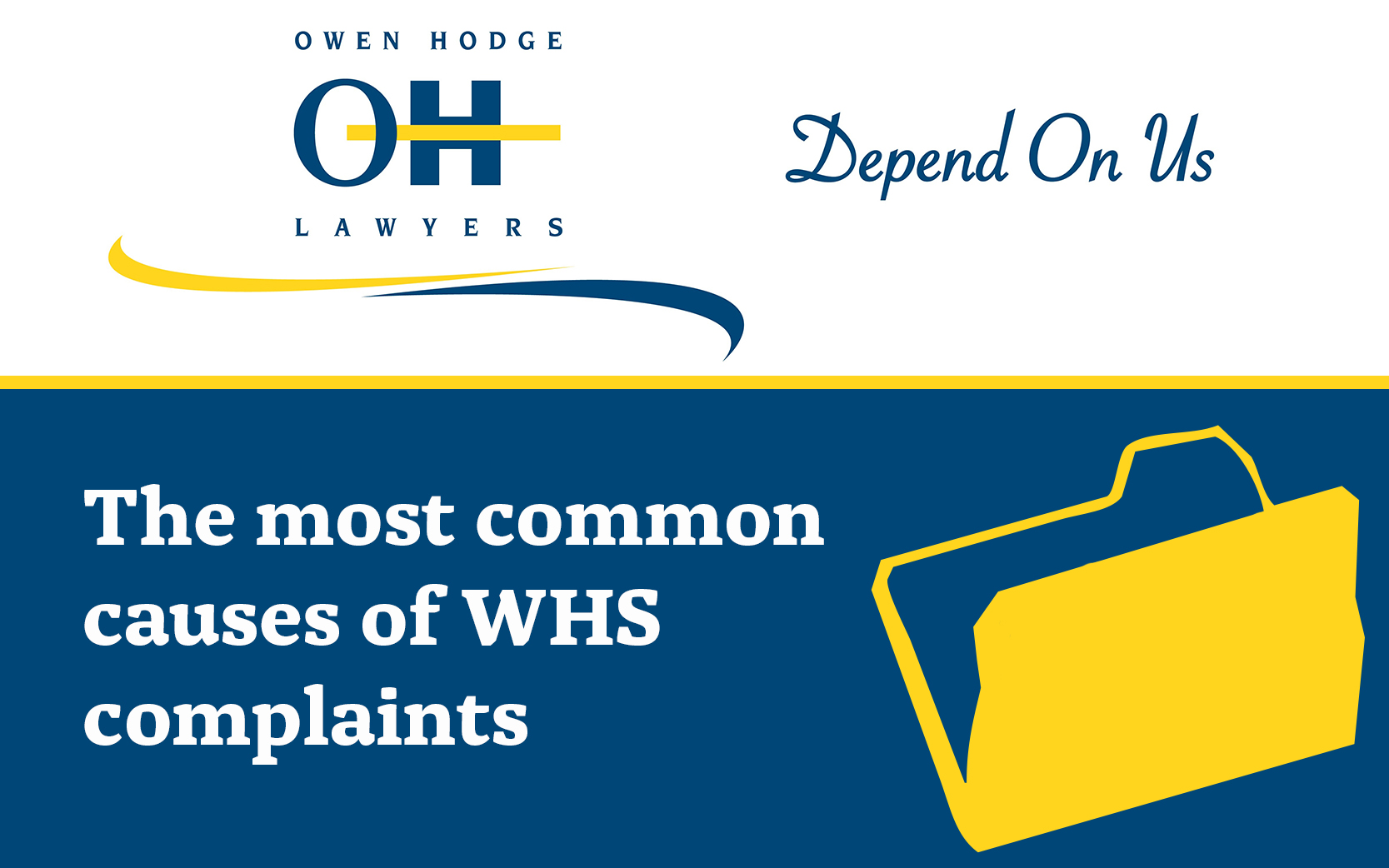
Workplace Health & Safety (WHS) involves the assessment and management of a wide range of risks that impact the health, safety or welfare of those within the workplace. This includes the health and safety of customers, employees, visitors, contractors, volunteers and suppliers.
Prior to 2012, Workplace Health & Safety (WHS) laws were known as Occupational Health & Safety (OH&S) laws. These laws used to differ across states and territory governments, and so the WHS were created to become a more universal set of rules.
The following lists some of the more common causes of accidents in Australian workplaces, and what can be done by both employers and employees to prevent them from occurring.
Slips, Trips & Falls
Employees falling due to slippery floor surfaces or objects left in harm’s way account for thousands of WHS claims every year. These injuries can range from slipping over on improperly cleaned wet floor, tripping over electrical leads, or falling from a small stepladder. Many slips, trips and falls can be easily prevented and the following solutions can be implemented at minimal cost.
Ways to prevent employees from falling at work can be as simple as implementing effective cleaning management systems, removing all obstacles from busy walkways, ensuing that there is adequate lighting and that all employees are wearing the correct footwear. Once these resolutions have been put into place, the number of WHS complaints against slips, trips and falls will dramatically decrease.
Fatigue
Fatigue can have a devastating impact on personal, workplace and public safety. Notoriously, severe fatigue can affect a person’s judgement, almost to the point where a critically fatigued individual has the same decision making skills as an intoxicated person. Fatigue is more than just feeling a bit tired – it is an acute, ongoing mental state of physical exhaustion that restricts a person’s competence, making it harder for them to perform daily tasks to their usual standard.
A wide range of issues can contribute to fatigue, such as:
- Prolonged or intense mental or physical activity
- Sleep loss or poor sleep
- Long shifts
- Short recovery time between shifts
- Long commuting times
- Family demands
There are a number of issues associated with fatigue, including poor concentration, impaired judgement, poor hand-eye coordination and visual perception. Long-term fatigue can have an even more debilitating effect on an employee’s health, and can be a contributing factor to serious conditions such as heart disease, diabetes, high blood pressure, anxiety and depression.
WHS laws oblige employers to eliminate risks arising from fatigue, and in consultation with the employee in question, steps should be taken to assist with and eliminate the cause for fatigue. Safe Work NSW has put together a guide for managing the risk of fatigue at work.
Posture/Ergonomics
Prolonged work at a desk or computer can aggravate, or lead to work-related injuries, particularly of the neck, back and upper limbs. This can be exacerbated if the workstation is poorly set up, leading to a number of issues such as sprains and strains of the neck, back, shoulders, wrists or hands.
In order to minimise these risks, it is important to have an ergonomic workstation design, and to maintain a proper posture when working. It is particularly important to pay careful attention to the positioning of the head, neck/spine, arms/wrists, hips and feet.
Ensuring an ergonomic workplace environment means that employees will be less likely to suffer and to have to lodge a WHS compliant.

Bullying
Workplace bullying is repeated and unreasonable behaviour directed towards a worker or group of workers that creates a risk to psychological health and safety. Bullying can take many different forms including psychological, physical or even indirect and can affect workers in the form of fatigue, anxiety and depression.
The presence of bullying in the workplace can be a result of poor workplace culture supported by an environment which allows such behaviour to occur. Poor people management skills and lack of supportive leadership can also add to an employee’s stress.
To comply with the WHS legal requirements, a risk management system to deal with workplace bullying should be in place that informs and trains all workers in the following matters:
- Identifying and eliminating the risks of workers being bullied
- Familiarity with the workplaces bullying policy
- The expected standard of behaviour within the workplace
- The nominated individual who deals with reported bullying in the workplace
Everyone in the workplace should actively work to prevent workplace bullying before it becomes a risk to health and safety.
If you have experienced any Work Health & Safety issues within your place of work, don’t hesitate to contact the specialist Employment Lawyers at Owen Hodge Lawyers. At Owen Hodge, we are always happy to assist clients in understanding the any of your legal needs. Please call us to schedule a consultation at 1800 780 770 at your earliest convenience.
